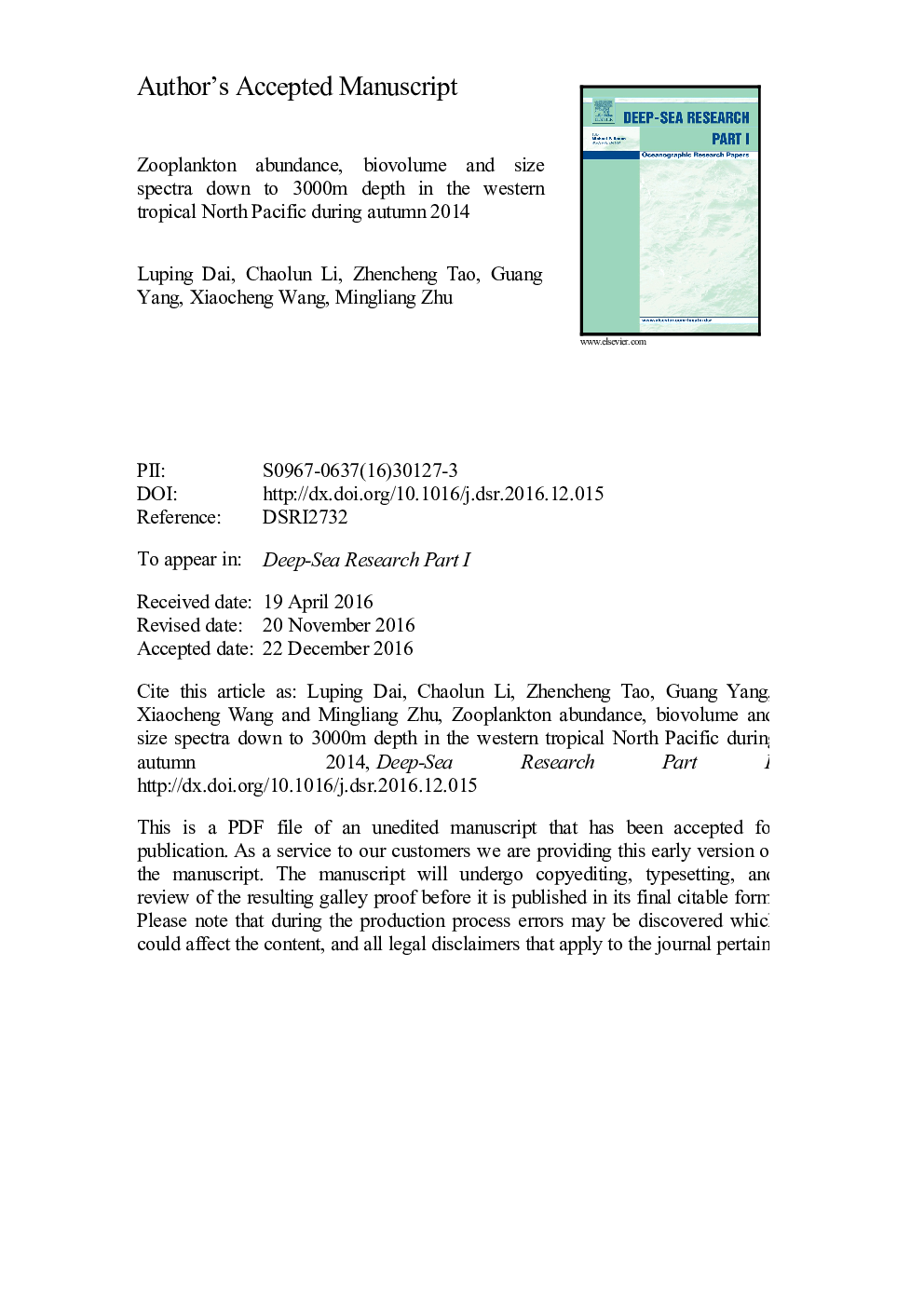| Article ID | Journal | Published Year | Pages | File Type |
|---|---|---|---|---|
| 5764621 | Deep Sea Research Part I: Oceanographic Research Papers | 2017 | 30 Pages |
Abstract
In this study, we evaluated the vertical distribution of the zooplankton abundance, biovolume, and size spectra down to greater depths (0-3000 m) in the Pacific western boundary currents of the western tropical North Pacific during autumn 2014 based on ZooScan measurements with samples obtained using a MultiNet system. Ranges of the integrated zooplankton abundance and biovolume through the water columns were 259.2-1560.6 ind. m-3 and 121.1-851.0 mm3 m-3, respectively. Both the zooplankton abundance and biovolume decreased as the depth increased. The pattern of declining zooplankton abundance with depth was described better by a power regression model, whereas that of the biovolume fitted better to an exponential regression model. The slopes of the normalized biovolume size spectra for most samples (60/63) were lower than -1 (range from -1.11 to -0.25), which indicates that the zooplankton communities in the study area were characterized by low productivity and high energy transfer efficiency. Larger body size was observed with greater depth, which may be a strategy that has developed to increase buoyancy and reduce attacks by predators. Bray-Curtis cluster analysis based on the biovolume of zooplankton size classes of each taxonomic group at intervals of 1 (log2 mm3 ind.-1) between -8 and 13 classified the zooplankton communities into three groups, which basically coincided with the vertical patterns of the optical layers of water, i.e., the epipelagic zone, the mesopelagic zone, and the bathypelagic zone, respectively.
Keywords
Related Topics
Physical Sciences and Engineering
Earth and Planetary Sciences
Geology
Authors
Luping Dai, Chaolun Li, Zhencheng Tao, Guang Yang, Xiaocheng Wang, Mingliang Zhu,
